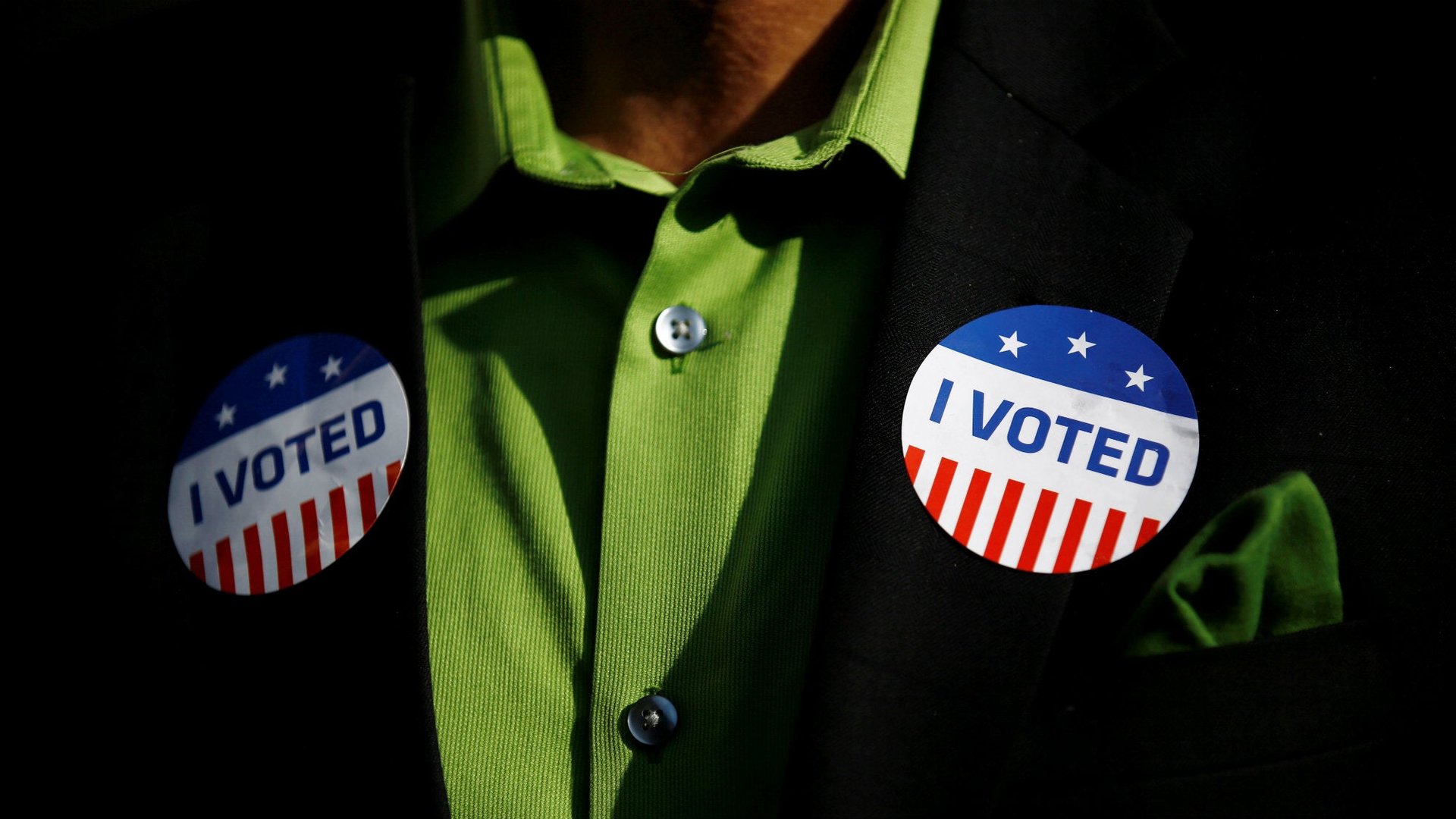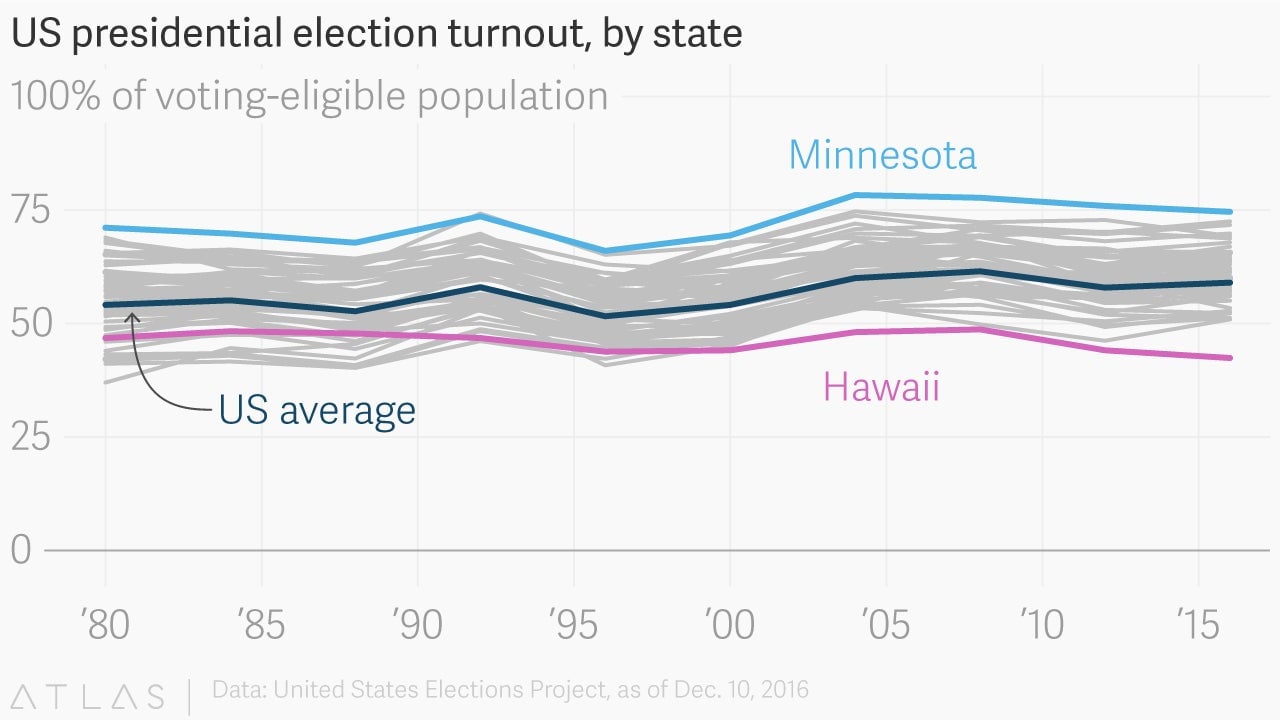In 2016, voters in Minnesota turned out in droves and Hawaiians didn’t bother
It’s more than a month after the US election and most—but not all—of the votes have been counted. Although it only took a few hours of tallying to tell that Donald Trump had prevailed, sifting through the provisional, absentee, and contested ballots can take weeks.


It’s more than a month after the US election and most—but not all—of the votes have been counted. Although it only took a few hours of tallying to tell that Donald Trump had prevailed, sifting through the provisional, absentee, and contested ballots can take weeks.
By now, most states have finalized the count for what proved a momentous election. At last count, Hillary Clinton received some 2.8 million more votes than Donald Trump overall, but Trump won in the states that mattered, getting 306 of the 538 electoral college votes. (Electors meet on Dec. 19 to make Trump’s victory official.)
Just over 59% of voting-eligible Americans cast a ballot this year, up from 58% in 2012, according to calculations made by the United States Elections Project, run by Michael McDonald of the University of Florida. According to these numbers, the 2016 election wasn’t much of an upset in one sense: turnout.
For the fifth presidential election in a row, Minnesota recorded the highest turnout and Hawaii the lowest.

Minnesota’s same-day registration makes it particularly easy to vote, while high levels of volunteerism, strong third-party movements, and other factors are also cited for consistently above-average turnout rates in the Midwestern state.
Hawaiians are less enthusiastic. Even when the state’s native son Barack Obama ran for president, fewer than half of eligible voters cast a ballot. In the latest election, only around 42% did, which is low even by the state’s standards. The 50th state is remote from the mainland in both a literal and figurative sense, with a distinct culture, history, and, crucially, time zone. Since it’s five hours behind the East Coast, on election day the result is often announced before polls even close on the island.